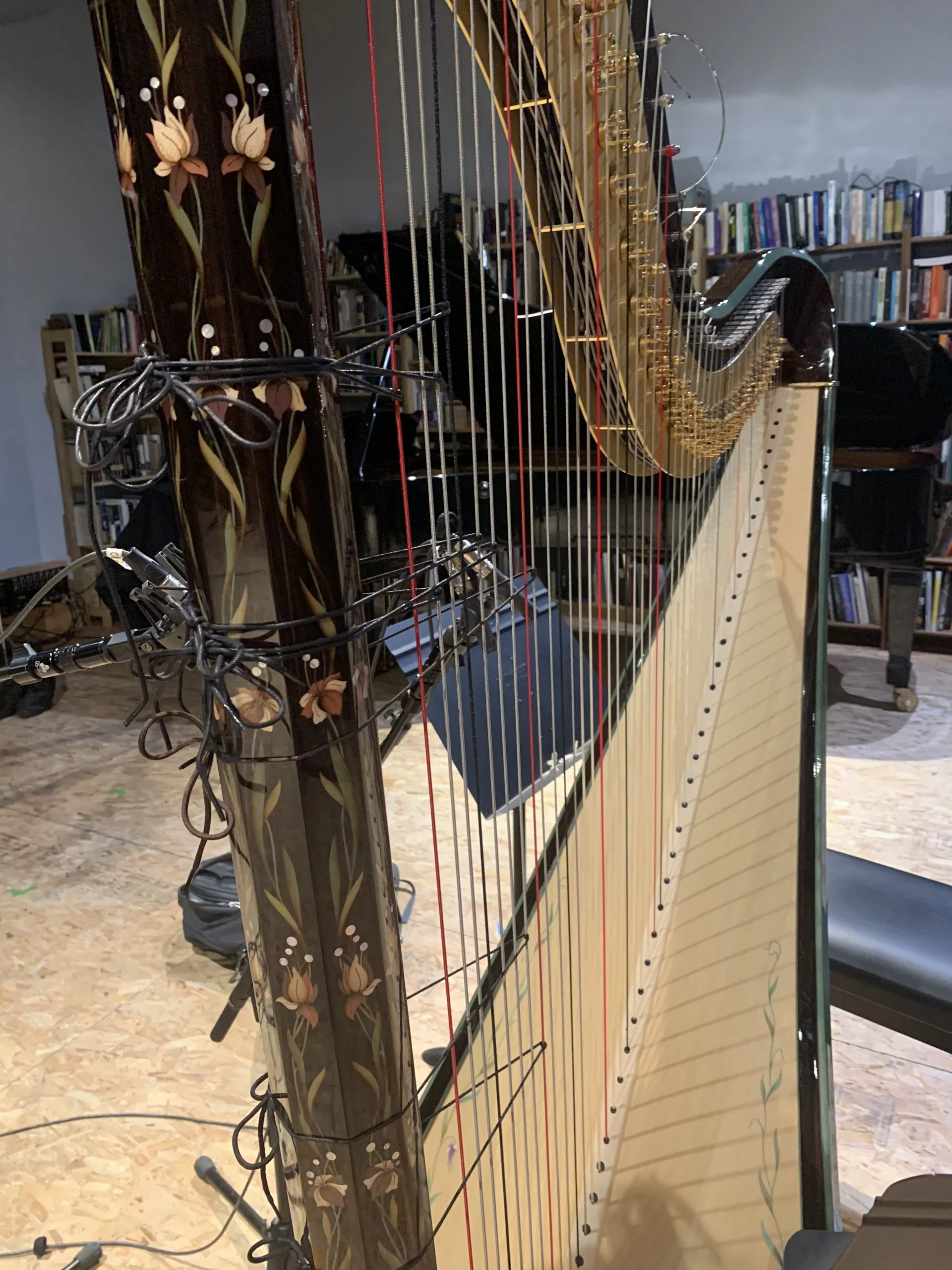Omolu
Omolu is a work for harp in an extreme scordatura. It evokes the eponymous orisha Omolu, whose face is so disfigured by an unnamed illness that it must be covered. Commissioned by the Miller Theater at Columbia in 2022 for their Mission Commission podcast series, the work marks a stark departure from what can normally be expected from a prepared harp.
Social media’s many benefits are self-evident, but I think musicians in the new music sphere benefit from the ability to see interesting developments and the rise of important voices in real time. It was through Facebook that I learned of Marcos Balter’s music, where I became fascinated with the intense beauty, but also variety in his compositional voice. It was on Facebook that I also saw what I looked like, and so was able to introduce myself to him in chance encounter in Morningside Heights. A coffee and a discussion led to the possibility of a new work for harp, and a year later that possibility became an opportunity at The Miller Theater, who commissioned a solo for their new podcast series, Mission Commission.
Workshopping over Zoom, we spent time with toys and accoutrements to adorn the harp with, but in the end it was decided that rather than ornamenting the harp – that is, changing it from without – the harp would be altered from within. An intense scordatura of 12 consecutive sub-semitones beckoned me to restring the harp, find new gauges of string, and challenge the amount of pressure the soundboard and mechanism might be placed under. This is not just a scordatura, it’s a refrigeration of the harp that challenges it’s internal function and operational logic.
Of course, the work’s title carries some nominative determinism. In Brazilian Candomblé, Omolu is the deity associated particularly with epidemics, being syncretized with the figure of St. Lazarus. Bearing a face so scarred by disease, he cannot be looked upon and appears in ceremonies and with a raffia masquerade covering his whole body. To me, Omolu is a fascinating figure, as his divinity, invisibility, untouchability all emanate from diseases that you or I could fall prey to, same as anyone else. But what is essential is that it is Omolu’s disease and disfigurement that is the source of his transcendence. Of the four harps on stage this evening, it is the most beautiful intricately designed of the instruments that has been selected for Marcos’ piece. The natural ebony, the 2,000 pieces of inlay on the column, the aesthetic aspects most associated with a Platonic vision of the harp are themselves a mask, behind which the transfigured instrument hides.

Read more on the Les Harpes Camac Blog.




